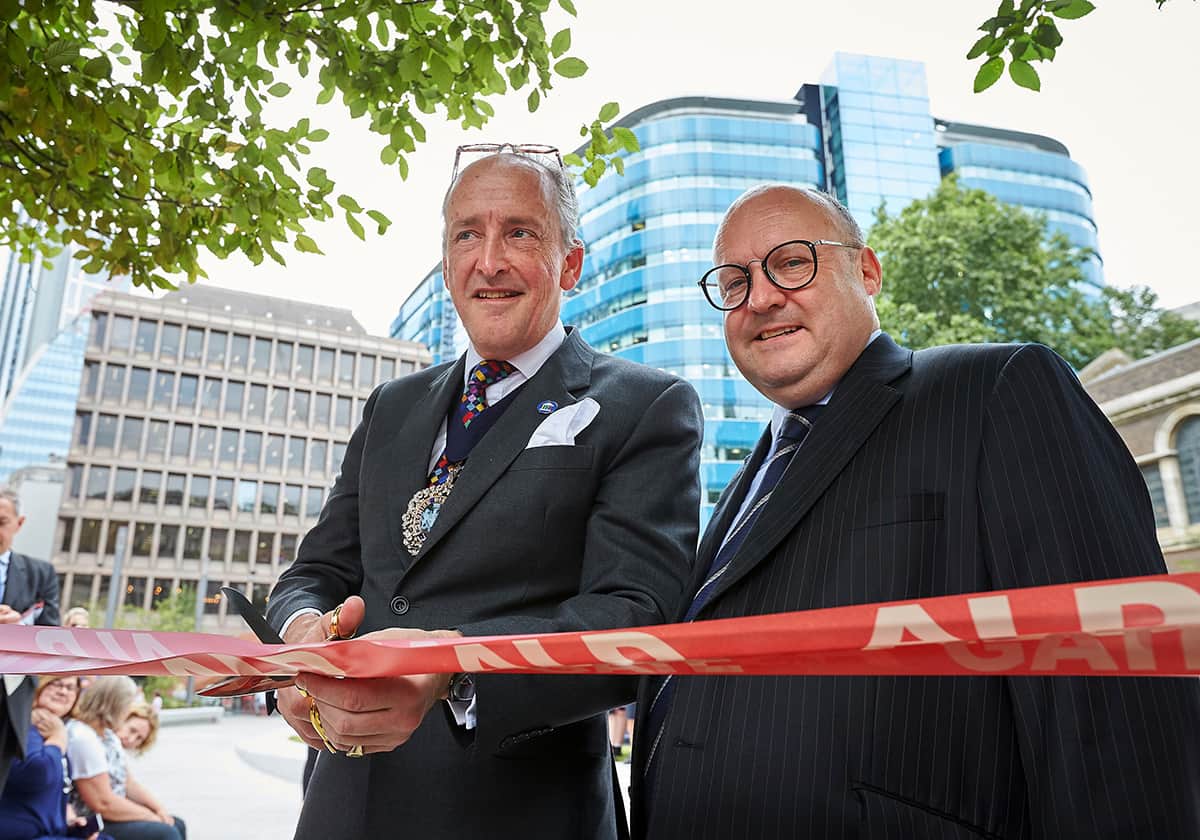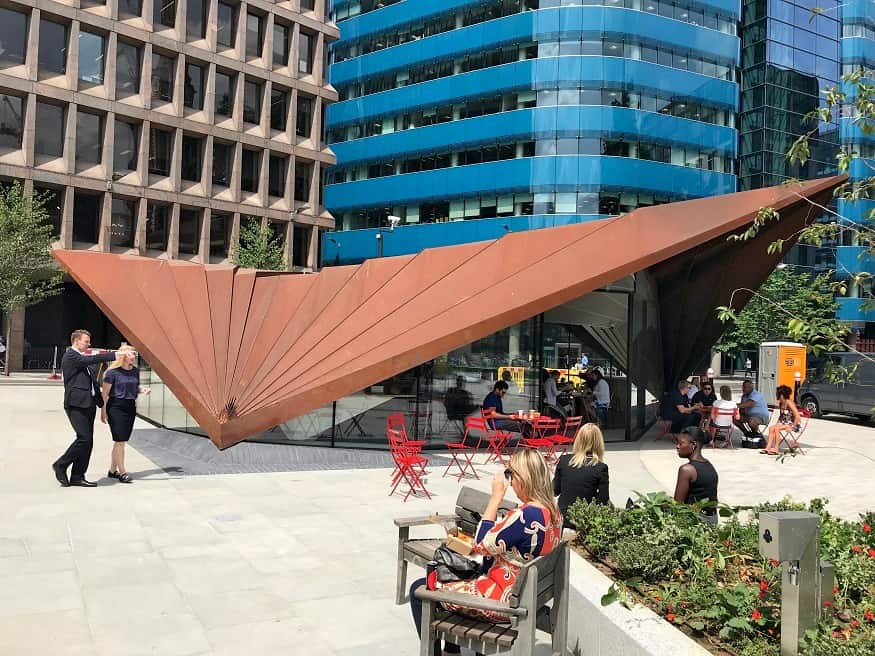
IT has been 10 years and £23million in the making, but Aldgate Square is open for business after Lord Mayor Charles Bowman cut the ribbon on one of the Square Mile’s largest public space regeneration projects earlier this month.
The scheme, which has transformed the traffic-choked Aldgate gyratory into a two-way road system and cycling lanes, two public spaces, and a pavilion, was launched with an official ceremony after hosting the inaugural Aldgate Community Festival in June.

There is much for local residents to love about their recently regenerated public realm, from the independent social enterprise cafe Kahalia to the improved air quality at nearby Sir John Cass Primary School, where pollution readings have fallen below the legal annual limit for the first time since monitoring began in 2003.
And while the City Corporation is hoping the new public space will be put to good use as a community asset for those living in the eastern part of the City, planning chairman Chris Hayward says major public realm projects are also playing a greater role in its strategy to attract new businesses to the Square Mile.

“More than ever we are seeing businesses focusing on local amenities and making location decisions based on the quality of public realm they can offer their employees,” he said. “We’re always in a competitive environment, post-Brexit even more so, and we need to keep demonstrating that the City of London is not only open for business, but is the preeminent place in the world to do business.”
Major public realm projects currently in the pipeline include the closure of Bank Junction to cars during weekdays, which is due for a final decision this autumn as part of the broader All Change At Bank scheme to improve safety at the intersection.
Improvements to the areas around Farringdon, Moorgate and Liverpool Street Underground stations are well underway ahead of Crossrail’s arrival at the end of the year, and a public consultation for a new strategy for the Eastern Cluster is in its final stages, which could result in more pedestrianised roads, gardens and a total rebrand for the area around Leadenhall Market.
“We have a challenge because it’s a medieval city and that makes it quite different to most other cities around the world that are designed on a grid basis in that we’ve got old alongside new, but that’s one of the great unique and exciting facets of the City of London,” Mr Hayward said.
Key to the integration of old and new in Aldgate Square is the new Portsoken Pavilion; a sculptural structure of steel and glass designed by MAKE, the architects responsible for the City of London Information Centre opposite St Paul’s Cathedral and the new highwalks at London Wall Place.

The pavilion has been designed as an asymmetrical structure with sliding glass walls set between three triangular support points so that it appears open to the modern office blocks to the north and south, 18th-century church St Botolph-without-Aldgate to the east and the Grade II- listed Victorian primary school to the west.
MAKE director Ken Shuttleworth said that the positioning of the pavilion meant that it had to be designed without a ‘back room’, rather they were able to convert a disused subway tunnel below the site into the cafe’s back-of-house kitchen and bathroom facilities.
The team decided to go ultra modern, rather than copy the architecture of the historic school and church, but where neighbouring skyscrapers offer a stark contrast in stainless steel and glass, the pavilion’s outer layer of weathering steel is a nod to both eras.
“It’s a great contrast in the City – the best of the new and the best of the old – and this layer of steel will weather and change over time and bear the marks of its own history, just like the church,” he said.
And we may well see more of these age-defying pavilions popping up around the Square Mile as the City Corporation launches its assault on uninviting public space.
Mr Hayward said public realm will feature “very heavily” in the City Corporation’s 25-year local plan, which will also be out for consultation this autumn. “The City’s occupier base is changing; where it was always banks and professional services, now we’ve got the media, we’ve got Bloomberg, fintech coming more into the Square Mile.
“We’ve got a much younger workforce than we’ve ever had, and so we’re aiming to try and make the City a 24-hour city – [public realm] is all part of that aim to have quality places where people can go at any hour of the day.”






